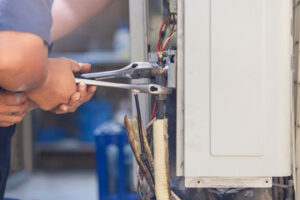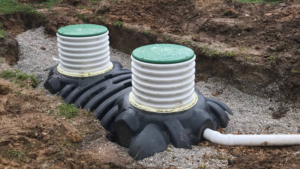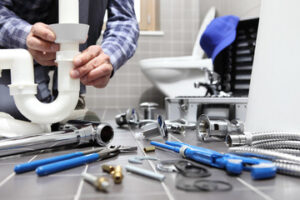Pianos are large, heavy musical instruments that can be difficult to maneuver through doorways, around corners, and up stairs. Moving a piano requires specialized equipment, such as special cradles and hydraulic lift gates.

Attempting to move a piano yourself can damage your house and your belongings. Hiring professional movers can save you time and money. Visit https://pianomoverscharleston.com/ to learn more.
A Piano is a complex instrument that requires professional expertise to transport safely. The specialized equipment and heavy weight make this a hefty investment, but the cost is well worth it to protect this precious item from costly damage or injury. Many people believe that moving a piano themselves is an inexpensive option. However, this DIY approach can be expensive in the long run, especially if you’re not careful. Several factors determine the overall cost of piano moving, including the size and distance, the type of piano (upright, baby grand, spinet), and stairs.
Pianos can be difficult to maneuver through standard doorways and staircases, making them a challenge to move without damaging your home or injuring yourself. Even the smallest upright piano weighs over 300 pounds, and a grand can exceed 1,000 pounds. Additionally, they are awkwardly shaped and do not have handles, making them hard to grip. This is especially dangerous for solo movers, who can strain their backs or twist their ankles if they’re not careful.
It’s also expensive to fix damages incurred during a DIY move. Scratched floors, dented walls, or broken windows can cost hundreds of dollars to repair, and may require the hiring of professionals. Unforeseen internal damage to hammers or strings can compromise sound quality and depreciate your piano’s value. Additionally, many DIY moves void manufacturer or insurance warranties due to improper handling.
Whether you’re moving an antique upright or an expensive grand, a professional Piano mover can save you time and money. They will know how to maneuver the instrument through a variety of obstacles, and they can also help you prepare it for transportation. This can include removing and wrapping the legs and pedals, disassembling the lid, and packing the instrument in a crate. They’ll also use a piano dolly or skid board to transport the piano horizontally across long distances indoors.
The cost of Piano movers is worth the peace of mind they provide, and will ultimately save you money in the long run. It’s a good idea to research different companies and prices before making a decision. A reputable piano mover will take into account the size, weight, distance, and steps of the move when determining their price.
Safety
A piano is a very heavy musical instrument that requires special care when moving. It is important to find movers who take their job seriously and are trained in piano handling techniques. This ensures that the piano is transported safely and without damage. Piano movers also have specialized equipment for transporting the instrument, including piano cradles and hydraulic lift gates. They also use dollies to support the weight of the piano and protect it from damage during transport. They may even offer climate-controlled trucks for transportation over long distances or in extreme weather conditions.
During the move, the piano is wrapped in blankets to keep it protected from scratches and other damage. The piano is also secured with security straps to prevent it from tipping during transportation. This helps to minimize damage caused by rough roads, sudden stops and turns, and other factors that can harm the piano.
Piano movers are skilled at maneuvering the instrument and do it all day every day, so they know how to handle it without damaging it. They have special tools for moving the piano and can handle any size or type of piano, regardless of stairs or turns. They can even take the legs off a grand piano for easier transportation.
When choosing a piano mover, be sure to ask them about their experience and training. They should have a track record of safe moves and be licensed and insured. In addition, they should provide binding cost estimates, which will help you avoid surprise fees later on. You should also inquire about the types of specialized equipment they use, including piano cradles, hydraulic lift gates, and special dollies. They should also be familiar with your specific piano model and have experience handling it.
A person who attempts to move a piano without the proper equipment can easily get hurt. It is almost impossible to lift a heavy, unbalanced piano without injury. The movers are highly trained to know how to handle the instrument and will not only be able to lift it safely, but they will also help you save time and money by minimizing damage to your home and furniture.
Time
The time it takes to move a piano can be a major factor in deciding whether to hire movers or not. In addition to the physical challenge, a person will need to spend time planning for the move and renting equipment. The process can take up to two hours for a grand piano and up to four hours for an upright piano. This can add up to a lot of time and money, especially if the piano is not moved properly.
Professional piano movers use a thorough assessment to determine the best route for the piano’s journey to its new home. They will take into account the type of piano and the layout of the new space. They will also assess any obstacles, such as narrow hallways or stairs, and find a solution to avoid them.
Pianos are not only heavy, but they are complicated and have delicate internal mechanisms. A single misstep can damage the strings, hammers, and soundboard, leading to costly repairs or replacements. General furniture movers may not have the expertise or specialized equipment to handle a piano’s unique needs, so it is critical to choose a company with experience and a reputation for quality work.
A reputable piano moving company will have a clear policy for how much they charge to move your instrument. They will also be able to provide you with detailed information about their services and answer any questions you may have. In addition, they will be licensed and insured to ensure your peace of mind.
If you decide to move a piano yourself, be sure to get an estimate from multiple movers and compare prices. This will give you a better idea of how much the service will cost and how long it will take to complete the task. A good moving company will be able to offer competitive pricing without compromising on quality.
Piano movers are specially trained to handle this heavy, fragile, and expensive piece of furniture. They use techniques that have been honed over decades to protect the instrument and ensure that it arrives at its destination in perfect condition. They also have specialized equipment, including dollies, ramps, and protective padding. This minimizes the risk of damaging your piano or your home. In addition, they can offer climate-controlled storage for your piano while it’s in transit.
Insurance
The risk of damage to a piano during relocation can be high, and it can lead to hefty repair costs. To minimize these risks, Piano movers carry specialized insurance policies that cover potential damages during transportation. The most common type of coverage is limited liability coverage, which provides basic protection and typically comes with the quote. However, this coverage may not be sufficient to protect a piano’s full value. Other types of coverage, including declared value coverage, can offer higher compensation rates and better safeguards for high-value items.
Pianos are large and awkwardly shaped, making them difficult to transport without proper equipment. In addition, they are heavy and have many moving parts, which can increase the risk of injury for movers. As a result, Piano movers often use padded dollies, ramps, and lifting straps to safely move the instrument. This prevents movers from straining their backs or getting injured, and ensures that the piano is transported with minimal damage.
A reputable Piano mover will provide a detailed, transparent quote outlining all the costs of their services. This will include labor, transportation, and equipment usage fees. The movers should also be licensed and certified to operate in your area, which ensures that they follow local regulations for safe moving practices. In addition, they should be able to handle complex moves, such as those that require a long-distance or international move.
Professional Piano movers will carefully prepare the piano before transportation. They will wrap it in protective pads to protect the keys and pedals, and will use ramps and stair lifts to navigate stairs or curbs. They will also load the piano onto trucks using hydraulic lift gates or specialized ramps, which allows for gentle loading and reduces the risk of damage.
In addition to ensuring that the piano is properly loaded and protected, Piano movers will perform a thorough pre-move assessment to identify and mitigate risks. They will check the dimensions of the piano and assess any challenges that could arise during the move, such as narrow doorways or small elevators. They will then plan a route to the destination, avoiding obstacles and minimizing the need for extra lifts or changes in direction.




